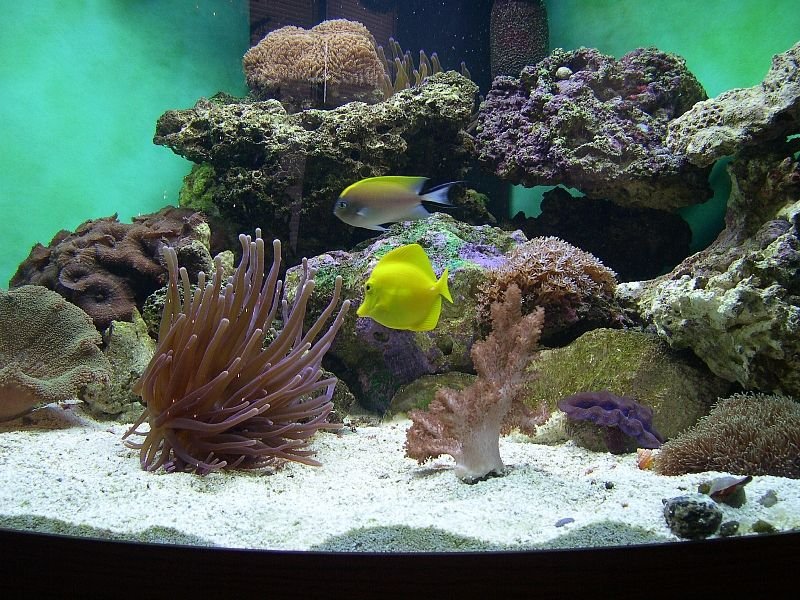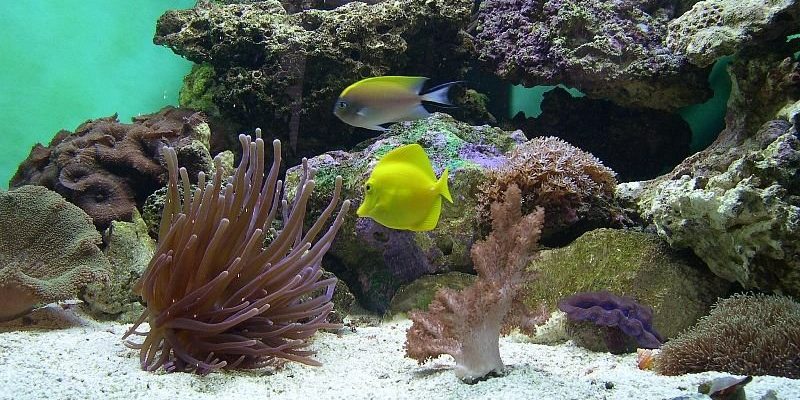
But like anything in life, there are pros and cons to using live rock. Maybe you’ve heard it’s great for starting a natural marine environment, or perhaps you’re concerned about the costs and maintenance involved. In this article, we’ll explore what live rock is, its advantages and disadvantages, and whether it’s the right choice for your saltwater tank. So, sit back with your coffee, and let’s dive in!
What is Live Rock?
Live rock is a fascinating topic in the aquarium community. Essentially, it’s limestone rock that has been colonized by marine life, such as coralline algae, sponges, and tiny critters like shrimp and crabs. Think of it as an all-you-can-eat buffet for beneficial bacteria and microorganisms. These little guys play a crucial role in breaking down waste, helping to maintain a healthy environment for your fish and corals.
You might be wondering how this rock gets its name. It’s called “live” because, when immersed in water, the organisms within can stay alive and thrive. This rock can be harvested from the ocean or created artificially, giving you options depending on your preferences and ethics.
The Benefits of Using Live Rock
There are several compelling reasons to consider using live rock in your saltwater tank. Here are some of the key benefits:
- Natural Filtration: One of the biggest perks of live rock is its ability to filter your water. The beneficial bacteria that live on the rock help convert toxins into less harmful substances, creating a more stable environment for your fish.
- Aesthetic Appeal: Live rock comes in various shapes and sizes, adding depth and character to your tank. It can create beautiful landscapes for your aquatic friends to explore, making your aquarium visually appealing.
- Habitat for Fish and Invertebrates: The nooks and crannies in live rock provide safe hiding spots for fish and invertebrates. This can reduce stress and aggression among your marine pets, promoting a happier ecosystem.
Let me explain a bit more about the filtration benefit. When you cycle your tank, the live rock starts working right away, breaking down ammonia from fish waste and leftover food. This means you won’t have to rely solely on artificial filtration methods.
The Drawbacks of Live Rock
While live rock is a fantastic addition for many, it’s not all sunshine and rainbows. Here are some potential drawbacks to consider:
- Cost: Live rock can be expensive. Depending on where you buy it, prices can range significantly, and you might find that setting your tank up with high-quality live rock can put a dent in your wallet.
- Transporting Organisms: Sometimes, unwanted hitchhikers like pests or algae can come along with live rock. These can cause problems in your tank, and controlling them may require additional effort.
- Weight and Space: Live rock is often quite heavy, which means you need a sturdy tank and stand. Plus, it can take up a lot of space, limiting how you design your aquascape.
Honestly, the cost can be a deal-breaker for some aquarists. If you’re on a tight budget, you might want to consider alternatives like dry rock, which can still offer good structure but at a lower price point.
Alternatives to Live Rock
If live rock doesn’t sound like the right fit for you, there are alternatives. Here are a couple of options you might consider:
- Dry Rock: This is basically rock that hasn’t been colonized by marine life. It’s lightweight, often less expensive, and can still serve as a great structure in your tank. Just keep in mind that you may need to “seed” it with live rock or bacteria to establish beneficial organisms.
- Synthetic Rock: Made of materials like ceramics or plastics, these rocks mimic the look of live rock but don’t host any organisms. They’re usually even lighter and can be designed in interesting shapes, giving you more freedom in your tank’s layout.
You might be wondering whether these alternatives can provide the same benefits as live rock. While they won’t have the same immediate filtering capabilities, with proper seeding and maintenance, they can still support a healthy aquarium.
How to Introduce Live Rock to Your Tank
Getting live rock into your tank isn’t just about dropping it in. Here’s a step-by-step guide to make sure everything goes smoothly:
1. Choose Your Live Rock: Purchase from a reputable source. Look for healthy specimens with plenty of color and life. Avoid rocks that look dry or lifeless.
2. Rinse the Rock: Before putting the rock in your tank, give it a gentle rinse in saltwater to remove any excess debris. This helps prevent unwanted contaminants from entering your tank.
3. Arrange the Rock: Think about your aquascape! Create caves, ledges, and hiding spots using the rock. Be careful not to stack it too high, as stability is important to prevent it from toppling over later on.
4. Cycle Your Tank: After introducing the live rock, start the cycling process. This might take several weeks, but it’s essential for establishing beneficial bacteria.
By following these steps, you can create a welcoming environment for your fish and corals while ensuring that your live rock contributes positively to the ecosystem.
Deciding whether to use live rock in your saltwater tank boils down to personal preferences and circumstances. It offers amazing benefits, like natural filtration and aesthetic appeal, but it also comes with downsides like cost and potential unwanted organisms.
Live rock can be a bit like adopting a pet—rewarding but requiring time, money, and effort. If you’re ready to take the plunge, it can create a stunning and thriving underwater haven. But if the drawbacks feel like too much, don’t fret! There are plenty of alternatives that can still help you build a beautiful marine environment.
Ultimately, the best choice is the one that fits your needs, budget, and passion for the underwater world. Whatever you decide, happy fish-keeping!

